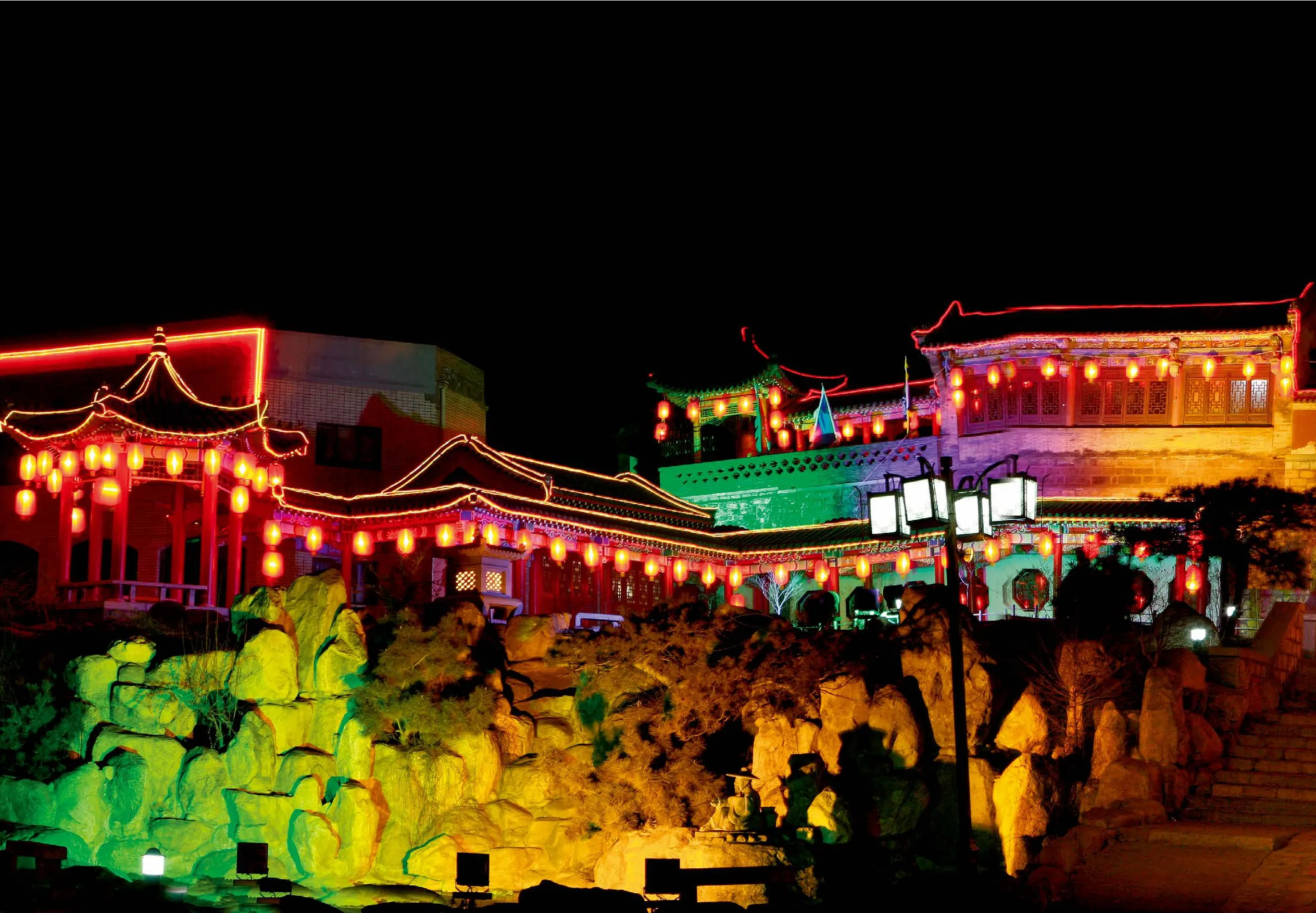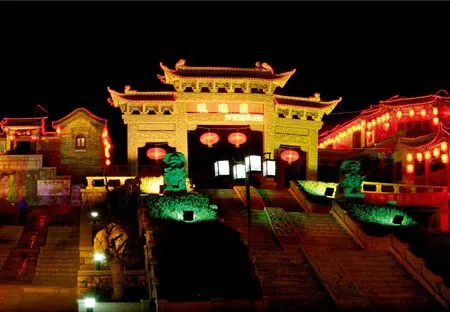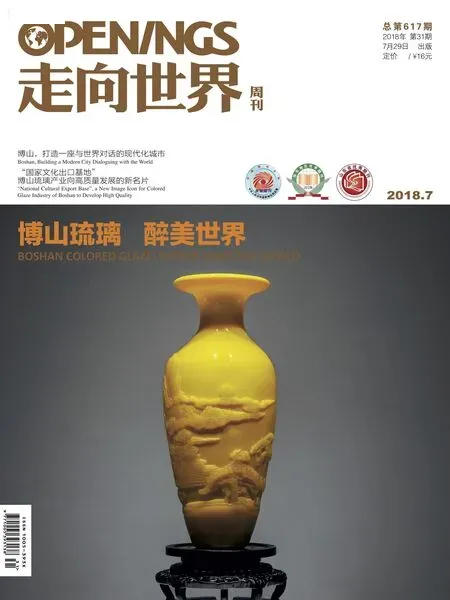琉光璃彩的历史记忆

博山,古代称作颜神。它位于山东省淄博市南部,三面环山,有着丰富的地矿资源。煤、铁、铝、重晶石、石英、陶土等储量大,分布广,为当地工矿陶琉业的发展创造了独特的自然条件。博山琉璃业随之诞生并发展兴盛,独具魅力。
博山琉璃生产历史悠久,文化底蕴深厚。这里有中国现存最早的古琉璃作坊遗址;有全国最早也是唯一的炉神庙;明万历四十五年(1617年)成立了中国第一个琉璃行业组织——炉行蘸会;著就中国古代第一部琉璃专著——《颜山杂记》;2006年中国第一座琉璃艺术博物馆在这里建成。
编辑/郭蓓蓓

○夜色中的博山琉璃园。图/王延刚Boshan Colored Glaze Garden in the lights of night.
Boshan was known as Yanshen Town in ancient times. Located in the south of Zibo, Shandong,surrounded by mountains on three sides, it abounds in geological and mineral resources. Coal, iron,aluminum, barite, quartz, clay and so forth have large reserves and are widely distributed, thereby, creating unique natural conditions for the birth and development of the local mining, ceramic and colored glaze industries. Hence, the colored glaze industry of Boshan emerged and thrived, with unique charm. Boshan has a long history of colored glaze production and profound cultural deposits. In Boshan, there is not only China’s earliest extant workshop site of colored glaze, but also the earliest and unique Furnace God Temple in China; in 1617, China’s first colored glaze industry organization – Furnace Association was founded; the first book about colored glaze – Yanshan Notes emerged in ancient China; in 2006,China’s first colored glaze art museum was established here.

